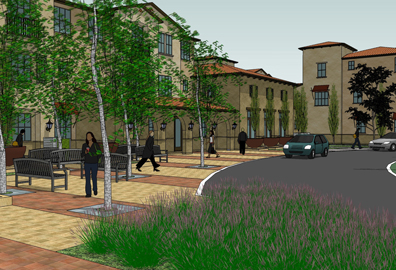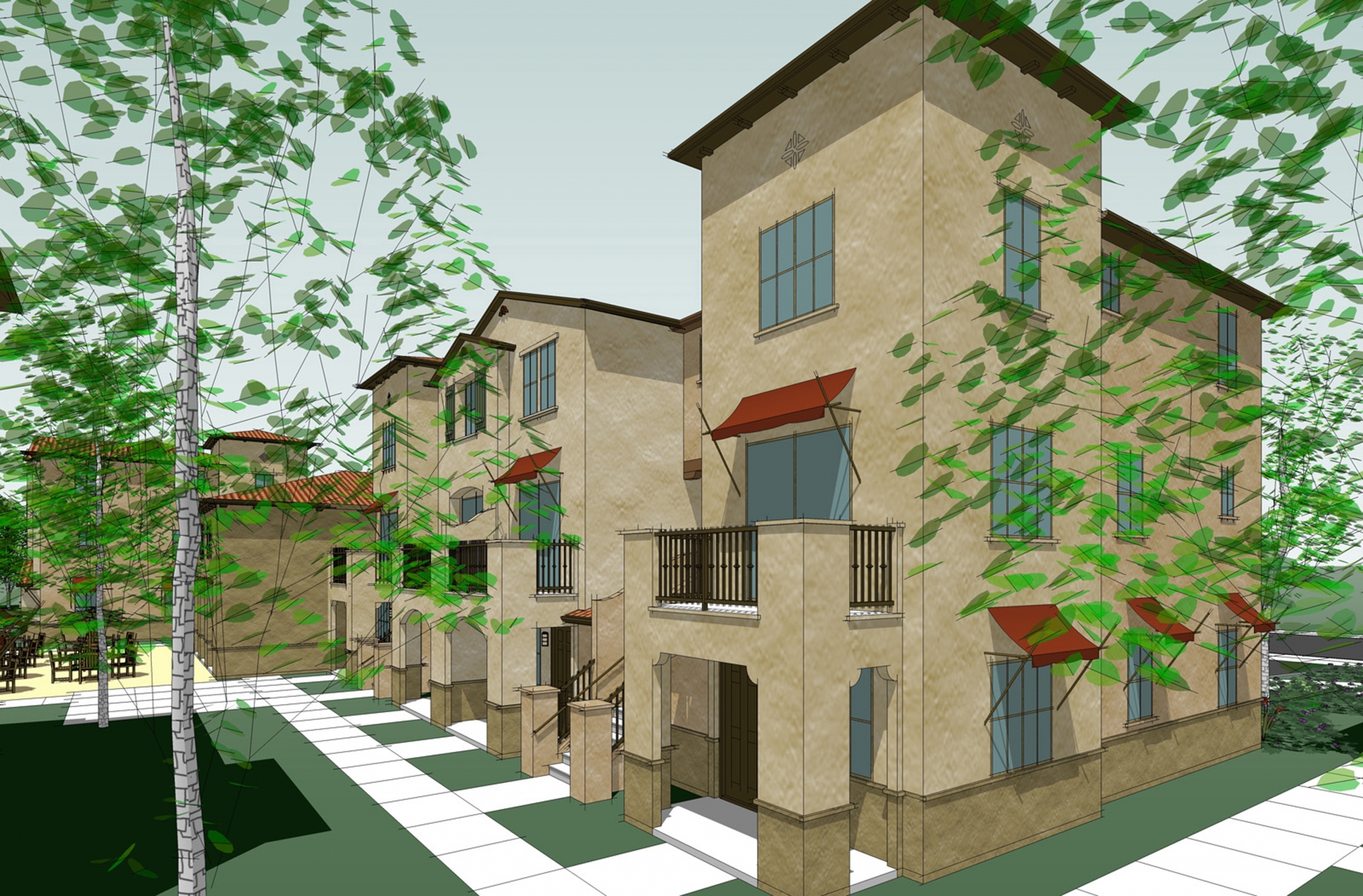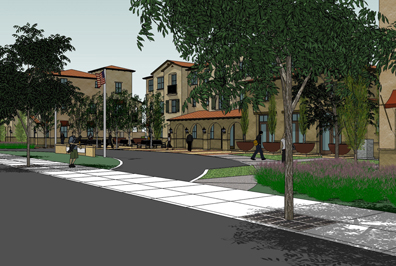California University Builds Eco-Friendly Apartments

When completed this September, Santa Clara University will open its first eco-friendly student-housing complex — all part of its larger plan to attain net zero carbon emissions by 2015.
Designed by KTGY Architects, the new housing project is located on 5.18 acres — in both Santa Clara and San Jose — and will house 400 junior and senior students.
Situated next to SCU’s Stephen Schott Stadium, the apartments allow for easy walking access to classes as well as rail transit. Designed under the Build It Green standards — a holistic approach to designing, constructing and operating — the new complex incorporates the latest in energy efficiency, indoor air quality, resource conservation and water conservation techniques.
“Santa Clara University is excited to have its first eco-friendly housing complex for students, especially since the university’s mission is to become more sustainable and climate neutral,” says Joe Sugg, assistant vice president of university operations.
SCU was previously unable to meet the demand for on-campus apartment accommodations from junior and senior students. This created accommodations in the surrounding community with inflated prices, while the student density in the neighborhood was disruptive to permanent residents.
“These new apartments will allow our students an independent lifestyle in housing designed to meet their needs while staying connected to campus and enjoying a community of peers as neighbors,” says Sugg. “We also needed to expand and update our underclassmen housing, but could not do that without moving juniors and seniors currently living on campus over to these accommodations.”
KTGY began designing this project in mid 2009, just as the economy hit it lowest point during the recession.
“It was an alternative to previous solutions that didn’t work in today’s market or economy,” says David Obitz, KTGY principal and lead designer. “This was a classic example of retooling and simplifying projects to work for today.”
The university declined to release the total cost of the project, which includes 138 townhouse-style apartments in 11 three-story buildings with eight one-bedroom units, 64 two-bedroom suites, and 66 four-bedroom/two-bath two-story units. Each unit will have its own patio or balcony, laundry facility, granite counters, stainless steel appliances and cherry cabinetry. There will also be covered and uncovered parking and all apartments will be secured with electronic locks.

California and Italianate
Obitz says this new housing project and the 4,500-square-foot student services center, — which includes a large multipurpose event room with kitchen and support services, will mesh nicely with SCU’s mix of Early California, Italianate and contemporary themes.
“The intent of the project theme is to relate to the context of the university’s architectural heritage as well as provide a building design that is technologically advanced,” he says. “Early California to Italianate themes found on the SCU campus are reflected here but with a few cleaner lines that are not literal copies of history, but contemporary interpretations of traditional themes.”
The design concept and organization gathers the student housing around a series of greenbelt views, anchored by a central courtyard, Obitz says.
“The sequential spaces are activated by two volleyball courts, a bocce ball court, multiple outdoor kitchen/barbecue and seating areas and plazas,” he says “All ‘roads’ lead to the hub of activity — the student services center.”
On Target
KTGY is also pleased to report that the project is on target, but like any campus housing project, having the units ready for occupancy at the beginning of the school year is critical.
“Missing by a day is like missing by a year,” Obitz says. “To meet the schedule, it took great efforts from the developer, The Sobrato Organization, and Santa Clara University, as well as the design and engineering consultants to coordinate their work product in a high effort so construction could begin and finish and meet the 2011 occupancy.”
Fortunately there have been few major obstacles to date. From a design and planning perspective, Obitz cites the biggest challenge as simplifying and downsizing the scope of the project and still achieving enough student housing units or density to satisfy the university and the city’s requirements for a transit-oriented project.
“Our original expectation was a ‘podium’ design with residential over a concrete garage at over 60 dwelling units per acre,” Obitz says. “Saving much cost and construction time, we eliminated the podium and provide the parking at grade towards the rear of the curvilinear property line.”
The team clustered three-story residential buildings together to form “outdoor rooms” with passive garden courts and active courtyards with recreational uses while maximizing student housing units with a three-story wood-framed structure, slab-on-grade at nearly 30 units per acre.
For the university, Sugg says the largest challenge was that the project straddled two municipalities — Santa Clara and San Jose.
“However, negotiations with both cities concluded an agreement on single jurisdiction for various elements of the project, such as fire code, building code and inspections,” Sugg says.


Climate Neutrality
While the project will not be LEED certified, many design features are consistent with LEED criteria. SCU is also committed to climate neutrality by 2015 — zero carbon emissions — and has implemented many energy-efficiency measures.
“It’s a big challenge and one that we cannot reach without offsetting some of our energy demands with carbon credits,” he says. “Nevertheless, we have a full court press on reducing energy demand and acquiring alternate energy sources.”
This includes education, cultural change, energy system upgrades, striving for energy efficiency of 50 percent better than the California code, lighting upgrades, electric vehicles, 1.0 megawatt of solar PV panels, ongoing evaluation of a new wind turbine, new generation solar hot water panels for heating and cooking in the dining hall, and the pursuit of a campus smart micro-grid system to leverage its new distributed generation.
Other eco-friendly features include Energy Star-rated lighting and windows, Dark Sky compliant exterior lighting, water-saving bathroom fixtures, high-efficiency dual-flush toilets, and trash and recycling receptacles made from recycled materials.
“In the last five years, while increasing the campus building area by 15 percent, SCU has achieved an absolute energy reduction of 20 percent and a carbon reduction of 25 percent, as well,” Sugg says. “100 percent of the university’s purchased electricity is green energy.”
Lisa Kopochinski is a freelance writer.
